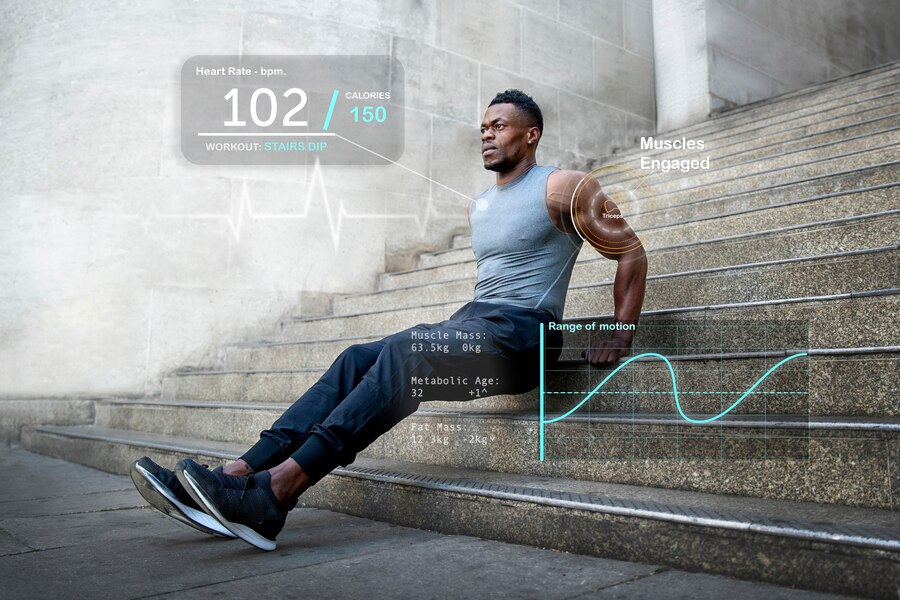
Introduction
OneStep, a New York-based tech startup, has announced a successful funding round, securing $36 million to expand its AI-powered, smartphone-based motion analysis tool. Led by Team8 and Vintage Investment Partners, with additional support from Aleph, 10D, and LionBird, this funding round will enable OneStep to scale its operations and enhance its gait-monitoring technology. With this investment, it aims to establish gait monitoring as a standard healthcare tool, unlocking new possibilities for proactive care and improved patient outcomes.
What is OneStep’s Motion Analysis Technology?
OneStep offers a motion analysis tool that leverages AI-enabled technology and smartphone sensors to analyze a person’s gait. Using the sensors in a regular smartphone, its technology captures real-time, real-life movement data, transforming it into actionable insights. This information helps healthcare providers monitor patients’ mobility and detect underlying health conditions that might otherwise go unnoticed.
The technology is particularly valuable in settings such as physical rehabilitation, senior care, and chronic disease management, providing a non-invasive, cost-effective solution for monitoring patients’ mobility. OneStep’s tool is accessible and user-friendly, making it easier for healthcare providers to adopt gait analysis as part of routine patient assessments.
The Significance of Gait Monitoring as a “Sixth Vital Sign”
Gait analysis is increasingly regarded as a “sixth vital sign” in healthcare. Beyond the traditional metrics heart rate, respiratory rate, blood pressure, temperature, and oxygen saturation—gait monitoring provides unique insights into a patient’s overall health. A person’s gait can indicate potential issues with balance, muscle strength, or even neurological health. Changes in gait can signal early signs of conditions such as Parkinson’s disease, stroke recovery, and other mobility-related disorders.
OneStep’s technology takes gait analysis further by making it accessible through a smartphone. This approach not only democratizes access to gait monitoring but also allows continuous, real-world tracking that yields more accurate and comprehensive data than traditional in-clinic assessments. By transforming gait analysis into a readily available health indicator, it empowers patients and healthcare providers to monitor mobility changes proactively.
How OneStep Plans to Use the $36M Funding
The recent $36 million investment will enable OneStep to expand its operations and enhance the clinical applications of its technology.
Expanding Clinical Applications
OneStep’s goal is to unlock a wider range of clinical applications for gait monitoring, beyond physical rehabilitation. According to Tomer Shussman, cofounder and CEO of OneStep, the company plans to utilize the funding to make motion analysis a vital tool across various healthcare settings:
- Senior Care: For elderly patients, continuous gait monitoring can detect early signs of fall risk, muscle degeneration, or cognitive decline.
- Cancer Treatment: In oncology, gait monitoring can serve as a metric for tracking patient strength, stamina, and overall well-being throughout treatment.
- Rehabilitation: Physical therapists can use gait data to adjust rehabilitation plans, allowing for customized recovery paths that optimize mobility improvements.
- Chronic Disease Management: For conditions like diabetes and cardiovascular disease, gait monitoring can reveal health trends, allowing providers to intervene early and prevent complications.
By expanding its clinical applications, it aims to make motion analysis an integral part of patient care, supporting a proactive approach to health management.
Scaling Operations
OneStep plans to use part of the funding to scale its operations, making its motion analysis technology accessible to a broader audience. This includes enhancing its platform capabilities, investing in data security, and creating more robust support systems for healthcare providers and patients. As OneStep’s tool gains wider adoption, the company intends to establish partnerships with healthcare providers, senior care facilities, and rehabilitation centers, integrating its technology into routine patient care.
Scaling also means increasing the platform’s global reach. By expanding beyond the U.S., OneStep can help more people benefit from real-time gait analysis, ultimately contributing to better health outcomes worldwide.
Impact of OneStep’s Tool on Healthcare Sectors
OneStep’s motion analysis tool is poised to create significant changes across various sectors within healthcare, particularly in:
- Preventative Care: With continuous gait monitoring, healthcare providers can catch early signs of mobility issues, enabling early intervention and reducing the need for more intensive care.
- Remote Patient Monitoring: OneStep’s tool aligns with the shift toward remote healthcare, allowing doctors to track patients’ mobility from a distance, a valuable feature in telemedicine.
- Rehabilitation and Physical Therapy: Physical therapists can gain insights into patients’ progress, adjusting rehabilitation plans based on real-time data, thus enhancing recovery rates.
- Senior Care: As gait is a critical health indicator for older adults, OneStep’s technology can help caregivers monitor and assess fall risks, enhancing safety and quality of life.
- Chronic Disease Management: Gait analysis can serve as an indicator of a patient’s overall physical health, supporting management and monitoring of chronic diseases.
The expansion of OneStep’s motion analysis technology could reshape traditional approaches to health monitoring, especially as healthcare providers adopt more digital solutions to streamline patient care.
Conclusion
With $36 million in new funding, OneStep is set to redefine the role of gait monitoring in healthcare. Its smartphone-based motion analysis tool provides accessible, real-time insights into patients’ mobility, making it easier for healthcare providers to detect health issues early and offer tailored interventions. By expanding into new clinical areas and scaling its operations, OneStep is on track to establish gait monitoring as a mainstream healthcare tool, potentially improving patient outcomes across the board.
As healthcare shifts toward more patient-centered and technology-driven approaches, innovations like OneStep’s motion analysis tool demonstrate how digital solutions can transform traditional health metrics and offer new possibilities for proactive care.
Discover the latest Provider news updates with a single click. Follow DistilINFO HospitalIT and stay ahead with updates on medical advancements. Join our community today!
FAQs
1. What does OneStep’s motion analysis tool do?
Ans: OneStep’s tool uses AI-enabled technology and smartphone sensors to analyze gait, providing real-time insights into patients’ mobility and overall health.
2. Why is gait monitoring important in healthcare?
Ans: Gait is often called the “sixth vital sign” and can indicate various health issues. Monitoring gait helps in early detection of balance problems, neurological issues, and chronic conditions.




